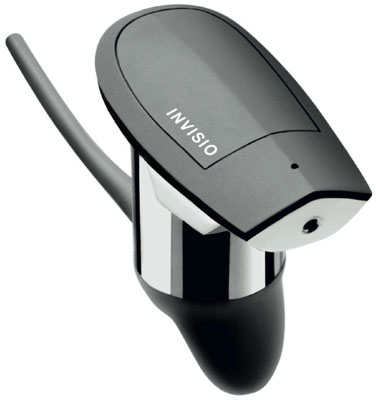Chrome is Not a Windows-Killer
I’ve been reading all sorts of starry eyed accounts as to how the new browser from Google dubbed Chrome is going to kill Windows. As someone who is absolutely dazzled by Chrome, I’m here to tell you that it isn’t the case. Certainly, we may be looking at one of the best browsers to date, particularly for the Windows platform. It’s sleek not just in appearance, but load times and memory usage.

That said, it’s just plain impossible for it to be an operating system, and it’s a pretty big stretch to say that it’s anything close to replacing the desktop.
That hasn’t stopped a number of pundits from proclaiming it to be the first nail in the coffin for Microsoft’s dominance of the desktop. One of my favorite foils, Drama 2.0, is actually in agreement with me on this issue as he calls out Henry Blodgett on an article which appeared on Yahoo Finance that makes a number of statements only a financial analyst with a smattering of technology know-how could make.
In the article, Henry states that “the need for Windows and other operating systems is declining,” and calls Chrome “an operating system for cloud computing.”
When I read that, I was just as bewildered at Blodgett’s qualifications as Drama. If you don’t have a good understanding of what technology is about, and how an operational personal computing device is put together on the hardware and software level, then everything Blodgett says makes sense. It’s no secret that Google, at least in some ways, has its sites set on Microsoft. The apps they provide, the search business, their advertising plays and now the browser all are direct, one-to-one affronts on Microsoft.
But to say to finance folks (and Web 2.0 pundits who lack the technical chops to know the difference) that this is a play to displace Microsoft with cloud computing shows an ignorance not just the underlying tech but also the history of long term Microsoft strategy.
Bill Gates was Talking About This Almost 20 Years Ago
It’s as if Blodgett has completely forgotten that Bill Gates had this same idea a decade ago, and that Internet Explorer was supposed to lead into this world of client/server computing in which the boundaries between the desktop and the “wide area network” were indistinguishable. He started down that path in 1993, in which he gave his blessing to client/server computing.
It’s understandable to have missed that, but to have forgotten completely about Microsoft’s thin-client play with WebTV is just a bit of funny. The way that the product faded to black after it’s acquisition for nearly half a billion was nothing short of noteworthy to anyone worth his salt in tech.
Since Blodgett failed to remember these launches, it’s not surprising that he fails to connect the dots between WebTV’s failure and the XBox’s success in further blurring the lines between the network and computing, what’s local and what’s remote.
Simply put, Microsoft is several iterations ahead of whatever “cloud is the computer” strategy Google is working on, Google is still the underdog, and they aren’t coming close to threatening them yet.
Is This Semantics or Fundamental Strategy Difference?
At first read, it’s easy to play off this rebuttal as me playing semantics. Obviously, the need for an OS is never going to decrease. The operating system is the software that lets your monitor talk to your processor and your hard drive Iomega eGo Portable Hard Drive and your keyboard and all those otherwise useless hunks of plastic and metal you’re reading this from.
What most of these pundits actually mean to say is that Chrome is going to replace the desktop, and the overall Google strategy is to develop a robust and responsive browsing environment suitable for replacing the traditional desktop with.
This, too, is myopia induced analysis, though. Blodgett and other bloggers are completely forgetting the Android initiative when they go down this hypothetical road. Almost everyone who’s brought up this idea that the “browser is the desktop” has implied or explicitly said that we’ll see Chrome start showing up on PCs, Macs, phones and palmtops.
The reasoning is that it’s based on Open Source codebase, and can easily be integrated into a wide number of hardware platforms as the desktop of choice. To do so, at least from a developer standpoint, is akin to buying a thousand umbrellas to replace your leaky roof. It simply wasn’t designed to reside on an environment other than the typical desktop you see on Windows, Linux and Mac environments. Android is the initiative where they adapt the Webkit codebase for mobile applications (and even then, there’s an OS and Desktop layer aside from the browser). Chrome only exists within desktop environments (not instead of desktop environments).
So What’s So Exciting About Chrome?
On the surface, it’s exciting because Chrome is a great browser, hands down. It beats the pants off any other browser I’ve tried, and I’ve tried them all. I hate bloated software, so my life is generally accompanied by a dull roar of misery since I’m for the moment stuck with Windows Vista Windows XP Era Ends . I’ve always wondered why it’s still called software advancement when despite consistent stark upticks in hardware capabilities, our software runs slower and slower with each iteration.
Call me crazy, but I’ve always valued efficiency. That’s what Chrome has done for the browser - it’s given users a capable and efficient alternative to the bloated options that they currently have. It’s (unfortunately) a revolutionary concept.
Beyond that, it is a potential paradigm shift in the way we look at applications, too. The ability to send a shortcut to the desktop that represents a link to a web based application? Well, that’s finally putting equal footing to web apps with desktop based applications. It is truly the fulfillment of Gate’s murky rumblings circa “The Road Ahead” of ‘a point where you wouldn’t be able to tell the difference between the desktop and the Internet.’
But make no mistake: this isn’t a desktop replacement - only a desktop incursion. There’s a huge difference.









